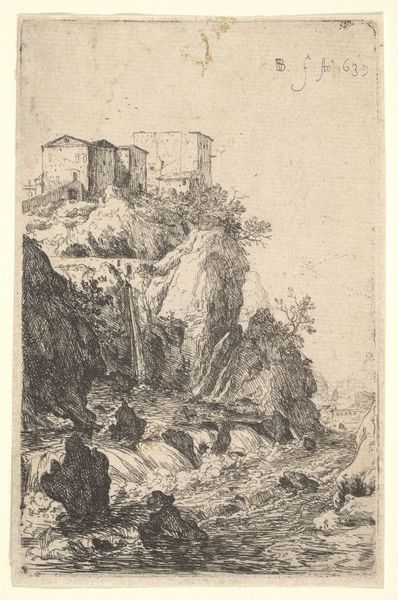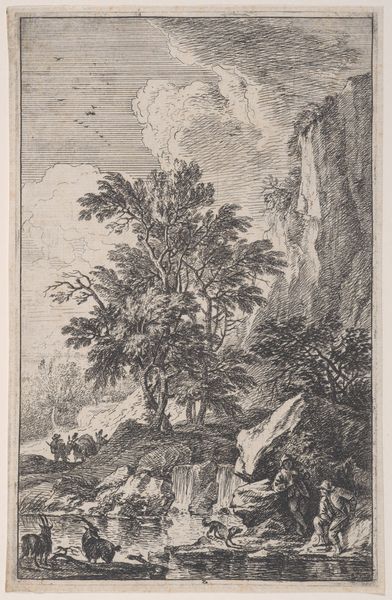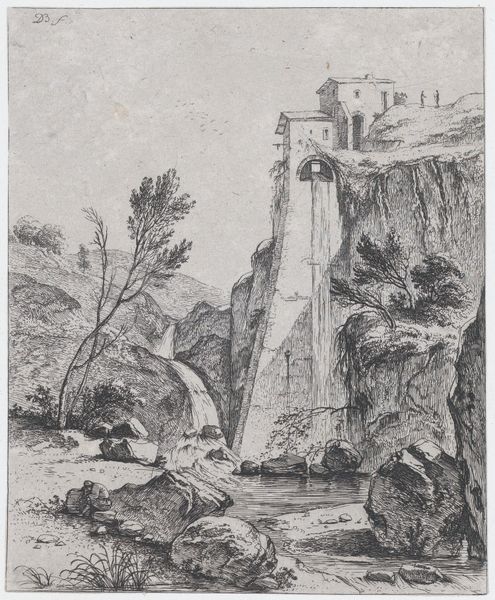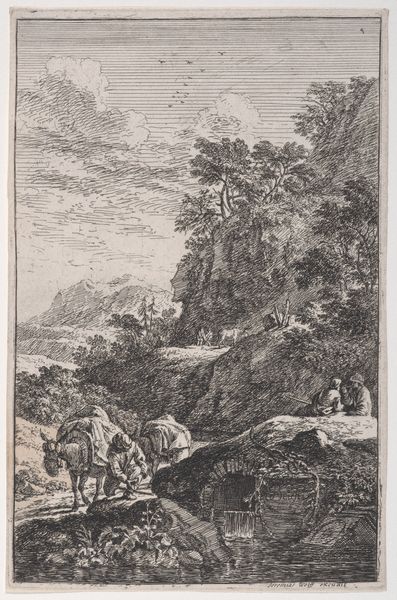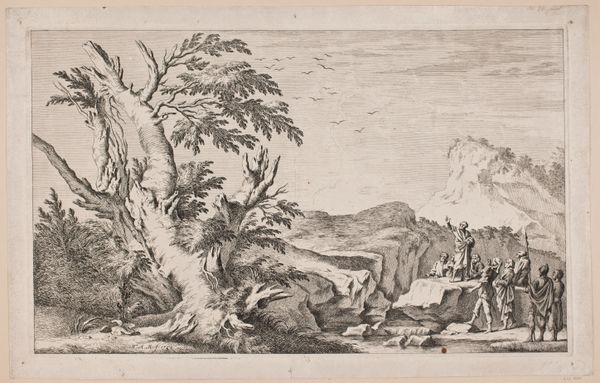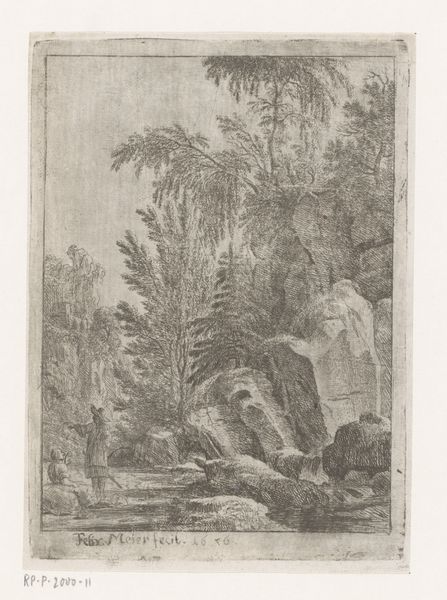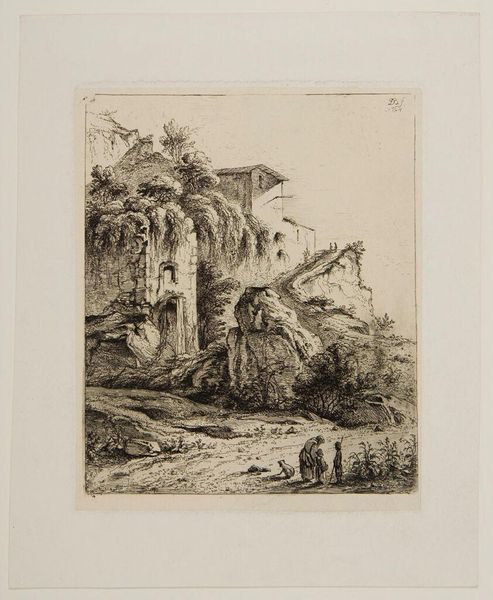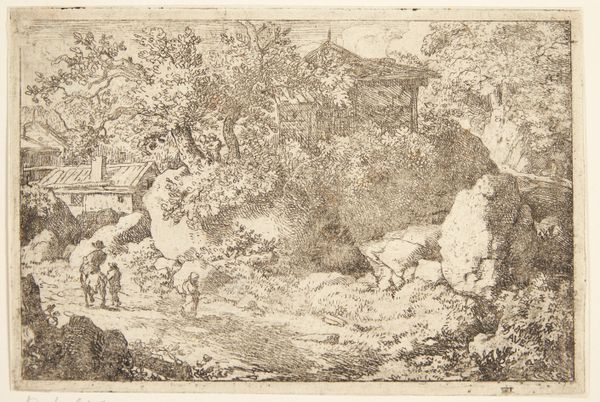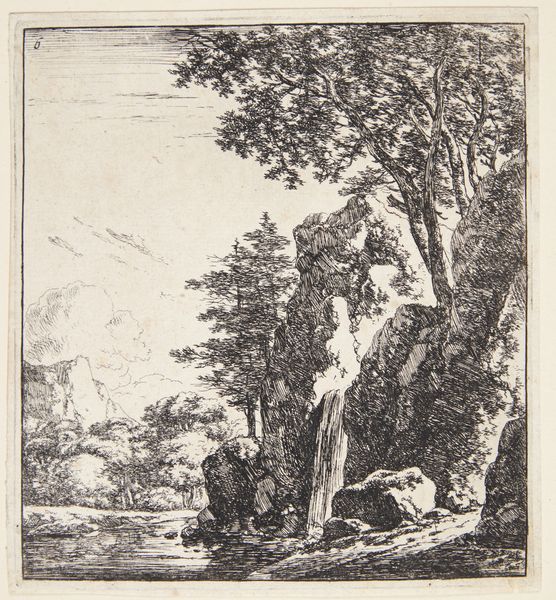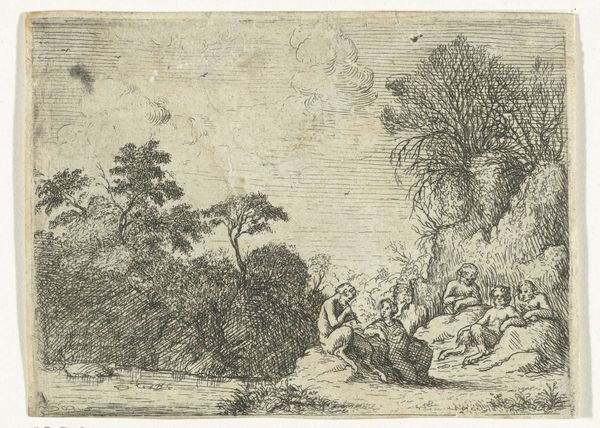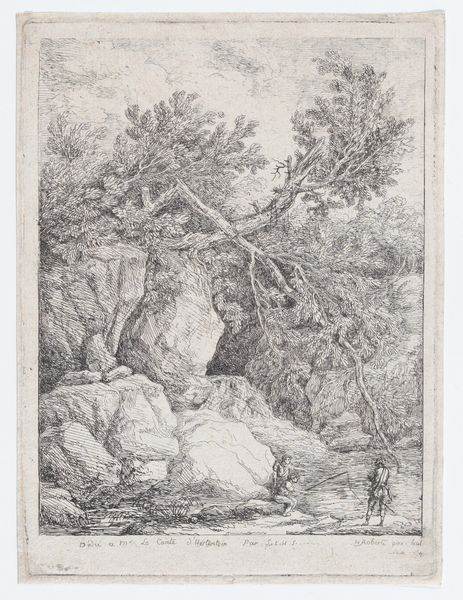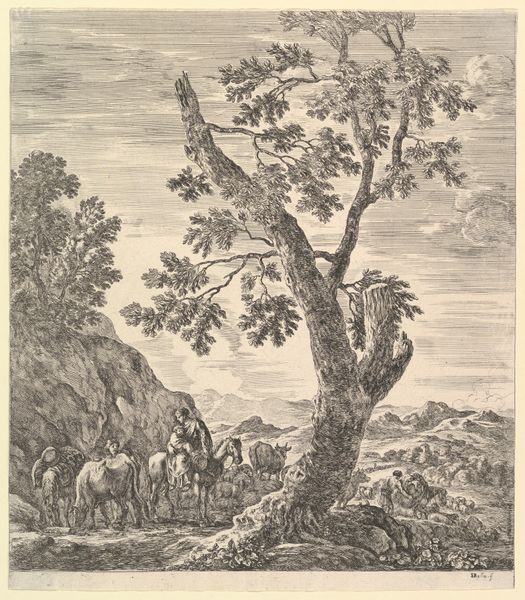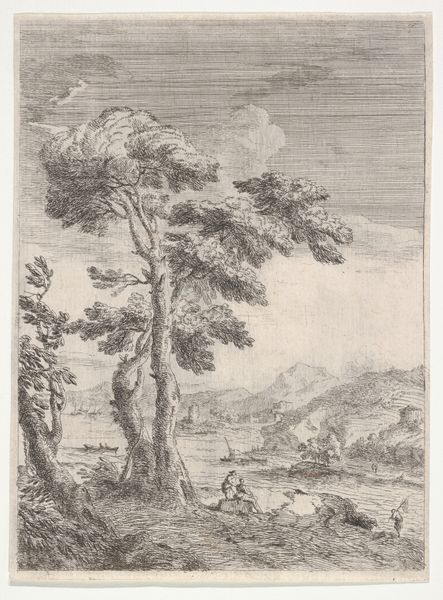
drawing, print, etching
#
pencil drawn
#
drawing
# print
#
etching
#
pencil sketch
#
landscape
#
charcoal drawing
#
pencil drawing
#
pen-ink sketch
#
building
Dimensions: Sheet: 8 7/8 × 7 1/8 in. (22.6 × 18.1 cm) Plate: 6 1/2 x 5 3/8 in. (16.5 x 13.6 cm)
Copyright: Public Domain
Curator: The textures achieved in Jean Jacques de Boissieu’s “The Fountain of Choulans,” etched in 1764, are fascinating, don’t you think? Editor: It is incredibly detailed. It's currently held at The Met, rendered in etching, and depicts this crumbling, almost romantic scene. What strikes me is the meticulous way he's captured the rocky landscape. What do you see in this print? Curator: Well, immediately I’m drawn to the labor inherent in etching. Consider the copper plate, the acid baths, the repetitive movements to create those myriad lines. This wasn’t just artistic inspiration; it was a manufacturing process. The materiality speaks volumes about 18th-century printmaking as both art and industry. Editor: Industry? That’s interesting. It feels more like a personal expression. Curator: Think about who would purchase prints like these. The rising middle class? A souvenir of a grand tour perhaps? Prints allowed for wider consumption of imagery. The means of production dictated who could access and own art, impacting social constructs of taste and status. Note, also, that while the landscape seems untouched, its depiction, its very creation, alters its state from nature into commodity. Do you see that interplay? Editor: I do. It's almost like the act of depicting it changes the "realness" of the scene, transforming it into something manufactured for consumption. And the process, the etching itself, contributes to that sense of manufactured reality. It makes me think about mass production in other areas, happening at the same time. Curator: Exactly! And that challenges our romantic notions of the lone artist. Instead, it situates the work within broader economic and social systems of production. Editor: That’s given me a completely new way of thinking about prints from this period. I was so focused on the artistic style, I hadn’t considered the industry behind it. Curator: That's precisely it! The beauty resides not just in the image, but in understanding its creation and dissemination within a specific cultural framework.
Comments
No comments
Be the first to comment and join the conversation on the ultimate creative platform.
